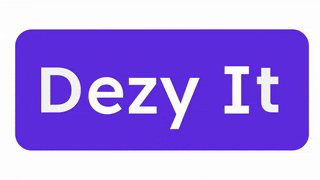Capitalizing on the Aesthetic Boom: Strategies for Managing Increased Demand with AI-Driven Solutions
- purvasha
- Jan 8
- 2 min read
The aesthetic industry is experiencing a period of significant growth, with demand for both surgical and non-surgical cosmetic procedures on the rise. This surge presents a wealth of opportunities for plastic surgery clinics, but also brings challenges in managing increased patient volume, maintaining high service quality, and ensuring efficient operations. This blog explores the key drivers behind this aesthetic boom and how AI-driven solutions can empower clinics to not just cope with the influx of patients, but to thrive.
Understanding the Forces Behind the Aesthetic Boom:
Several converging factors are contributing to the increased demand for aesthetic procedures:
The "Zoom Effect": Increased time spent on video calls has heightened awareness of facial features and imperfections, driving interest in cosmetic enhancements.
Social Media Influence: Platforms like Instagram, TikTok, and Snapchat normalize and promote aesthetic procedures, shaping beauty standards and fueling consumer demand.
Advancements in Minimally Invasive Techniques: Procedures like injectables, fillers, and laser treatments offer minimal downtime and lower risks, making them more accessible and appealing to a broader demographic.
Shifting Societal Attitudes: There's a growing acceptance and destigmatization of cosmetic procedures, with many viewing them as a form of self-care and personal investment.
Managing the Influx: The Challenges and Opportunities:
While increased demand is positive, it also presents challenges:
Managing Consultation Volume: Handling a large number of inquiries and consultations can strain clinic resources and lead to longer wait times.
Maintaining Personalized Care: Providing personalized attention and addressing individual patient needs becomes more difficult with increased volume.
Ensuring Efficient Operations: Managing scheduling, communication, and administrative tasks can become overwhelming, impacting overall clinic efficiency.
AI-Driven Solutions: A Strategic Advantage:
AI offers powerful tools to address these challenges and capitalize on the growing demand:
AI-Powered Chatbots for Initial Consultations: Chatbots can handle initial inquiries, answer frequently asked questions, provide basic information about procedures, and pre-qualify leads, streamlining the consultation process and freeing up staff for more complex interactions.
Automated Appointment Scheduling and Reminders: AI can optimize appointment scheduling, send automated reminders, and manage cancellations, reducing no-shows and maximizing resource utilization.
Personalized Patient Communication and Follow-Up: AI can personalize communication throughout the patient journey, from pre-operative instructions to post-operative care, improving patient satisfaction and adherence to treatment plans.
Data Analytics for Informed Decision-Making: AI can analyze patient data, market trends, and operational metrics to provide valuable insights for marketing, resource allocation, and business strategy.
Benefits for Clinics and Investors:
Increased Efficiency and Scalability: AI automates routine tasks, allowing clinics to handle a higher patient volume without significantly increasing overhead.
Enhanced Patient Experience and Satisfaction: Personalized communication and efficient service delivery lead to improved patient satisfaction and loyalty.
Improved Conversion Rates: Streamlined consultations and readily available information can increase the likelihood of potential patients converting into paying clients.
Data-Driven Growth Strategies: Access to comprehensive data insights empowers clinic owners and investors to make informed decisions and drive sustainable growth.
Conclusion:
The aesthetic industry is booming, and AI-driven patient management solutions provide a critical advantage for clinics looking to capitalize on this growth. By embracing AI, clinics can effectively manage increased demand, enhance the patient experience, and drive sustainable business success.




